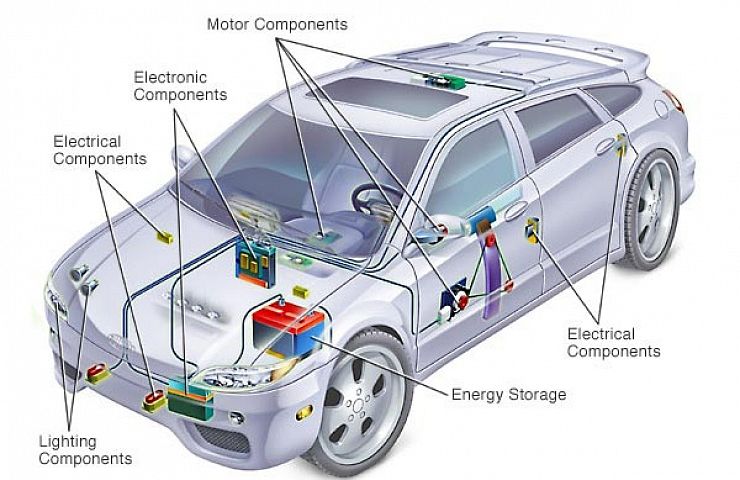Modern car electrical systems allow us to take advantage of dozens of automatic features and functions, whether sitting in a parking lot or bolting down the highway. The one thing linking them all? Electricity.
The three key components of electricity in general are voltage, current and resistance. It’s often understood as a water analogy. Current is the “flow” of electrons through a circuit and is measured in amps. Voltage is the “pressure” that moves the current and is measured in volts. Resistance, measured in ohms, can be considered the size of the pipe the water flows through.
Marvel Comics Might be the Best, but Car Electrical Systems are DC

Although we can’t imagine a car without electrical headlamps or our trip computer reminding us to get an oil change, the first big step for electrical systems aiding motoring was the electric starter. Hand cranks were the original way people started engines. This was dangerous, time consuming and could result in injury if the engine jerked to a start or reversed rotation from a backfire. Growing engine sizes and higher compression ratios made this task even more demanding.
Modern Car Electrical System Basics
How does a modern starting and charging system work? The driver turns the ignition key or pushes the ignition button. This feeds current to the starter motor solenoid, which in turn completes the circuit from the battery. The starter needs a large current to operate, more than a hand-operated switch could handle (more than we’d want to touch), and this is why the solenoid is necessary. When the key returns to ON from the START position, power stops flowing to the solenoid. This opens the contacts and disengages the starter.
The Alternator is the Heart of a Car’s Electrical System

The movement of the rotor inside the stator produces a great deal more electricity inside the coils of the stator. The energy produced here is alternating current, which doesn’t do much good for the battery or the rest of the car. A set of diodes rectify the current to DC. A voltage regulator is important for recharging the battery as well. This keeps the charge from becoming too high or too low, which would reduce the battery’s life. The diode bridge and voltage regulator are often inside the alternator housing, although this wasn’t always the case.
Dynamos are Dinosaurs
Prior to using alternators, dynamos (commonly referred to as generators) were the method of electricity generation and the core of the automotive electrical system. Generators use an armature surrounded by a set of unmoving field coils. Power flows into the coils and a regulator controls current to the fields to regulate the output. As the armature turns, electrical current induces the windings. Output is limited because all of the power must transfer through the brushes of the armature. An alternator can spin at much higher speeds, producing more power both at idle and higher speeds. Alternators also demonstrated a longer lifespan, resulting in their widespread use beginning in the 1960s.
Nothing Happens Without Juice
Why do the cars need to constantly be creating electricity and charging the battery once you’re moving down the road? Well, something needs to keep the radio at half blast while you’re rolling down the windows. Power locks, mirrors, wipers, windows and even some newer power steering units all require an electrical charge to work.
In a subsequent post, we’ll look at those systems closer, including diagnosis and troubleshooting some of the more common electrical gremlins that pop up.





